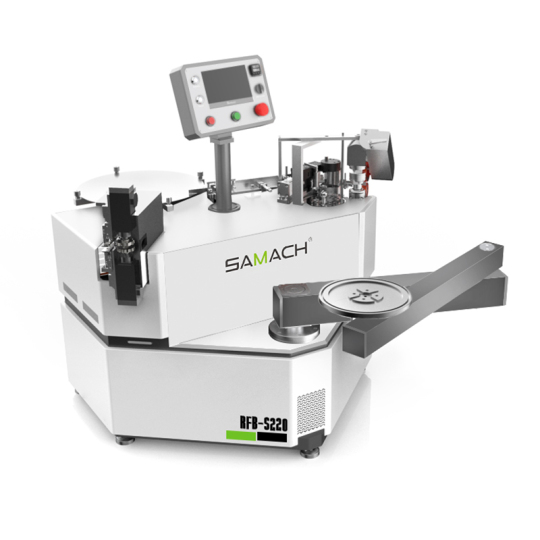
## Why the Edge Banding Machine Still Matters in 2025
In today’s cabinet and furniture workflows, the Edge Banding Machine is foundational to seamless edges using PVC/ABS/veneer/melamine tapes.
From craft studios to industrial lines, the right edgebander reduces defects and saves labor.
## Edge Bander Explained
An Edge Banding Machine seals panel edges with tape and finishes it to create a nearly invisible joint.
Key steps: pre-mill, apply glue or activate functional layer, press with rollers, cut overhang, profile, and polish.
## How It Works: Step-by-Step
1. Panel In-feed — A guided in-feed keeps parts straight and stable.
2. Edge Squaring — Light cuts clean the edge for superior adhesion.
3. Adhesive — EVA/PUR via glue pot.
4. Feed & Pressure — Controlled pressure ensures a tight joint.
5. End Cut — Clean ends define the part geometry.
6. Flush Trimming — Accurate tracking minimizes tear-out.
7. Corner Rounding (if equipped) — Servo rounding on advanced models.
8. Scraping & Buffing — Ready-for-install finish.
## Choosing a Machine Class
• Manual/Portable — lowest cost, on-site fixes, but variable quality and slow throughput.
• Entry-Level Automatic — EVA glue pot, trim/scrape basics; best for small shops moving off hand taping.
• Mid-Tier — better finish (pre-mill + corner round), faster changeovers, lower rework.
• Industrial/High-End — zero-joint (hot-air/laser), servo stations, high feed speed, line integration.
• Contour/Curve — for irregular parts; often needs special tapes or adhesives.
## Adhesives & the Zero-Joint Option
• EVA — great for prototypes and standard interiors; moderate durability.
• PUR Hot-Melt — thin glue line, excellent resistance, strongest bond; requires strict handling/cleaning.
• Zero-Joint — no liquid glue pot; perfect aesthetics with matched functional layers.
Tip: Stock EVA + PUR if your machine supports quick glue-pot swaps.
## What to Look For in a Machine
• Feed speed (~8–23 m/min) — higher speed raises throughput; match upstream CNC capacity.
• Panel thickness (~10–60 mm) — cover your typical work and thick countertop cases.
• Banding thickness (~0.4–3.0 mm) — thin for website lightweight looks; thick for impact resistance.
• Pre-milling power — enough to remove defects cleanly (often dual motors).
• Corner rounding — servo on mid/high models for consistent corners.
• Scraping/Buffing — final finesse on gloss/super-matt.
• Adhesive system — EVA/PUR/hot-air/laser dictates joint look and durability.
• Control — recipe library reduces operator error.
• Dust extraction — ports per station protect finish and health.
• Setup time — critical for short runs.
• Facility fit — avoid surprise upgrades.
## How to Choose for Your Shop
• Boutique makers — mid-tier with strong finishing stations.
• Commercial millwork/furniture — industrial model with servo stations, high speed, auto setups, in-line QC.
• Premium aesthetics — hot-air/laser for invisible seams.
• Flat-pack — durability + speed are key.
• First automation step — entry auto with EVA glue pot and essential trimming/scraping.
## Daily Habits That Pay Off
• Stabilize environment; verify three-phase power, air, and dust extraction.
• Set pre-mill removal just enough to clean the edge (≈0.5 mm total).
• Tune glue temperature/viscosity per spec; avoid overheating EVA; handle PUR carefully.
• Start with OEM defaults, then test and lock recipes.
• Planned sharpening reduces scrap.
• Good cleaning protects finish and uptime.
• Train safety: guards, E-stops, LOTO, PPE, hot surfaces.
## Troubleshooting Common Defects
• Obvious seam — check heat/viscosity/pressure; pre-mill better.
• Peeling at corners — adjust rounding and adhesion window.
• Rough veneer — tool maintenance + moderate speed.
• Squeeze-out/smearing — reduce glue or pressure; clean promptly.
• Tape misalignment — re-square guides/pressure beam; check tape path/tension.
## Choosing Edge Banding Materials
PVC/ABS are go-to choices with broad décor ranges; wood veneer looks premium but needs sharp tooling; melamine is budget friendly; aluminum/acrylic are accent options requiring careful handling.
For zero-joint, ensure tapes include the correct co-extruded layer and that its color hides the seam.
## Line Integration Tips
Integration reduces handling across shifts.
## Greener Edge Banding Choices
PUR/zero-joint can extend service life, low-VOC adhesives and effective dust extraction support safety, and recycled-content tapes or responsible veneer advance ESG goals.
## Edge Banding Machine FAQs
How fast? As fast as quality allows.
EVA vs PUR? EVA is cheaper to clean; PUR bonds stronger with a thinner line.
Pre-mill worth it? Highly recommended.
Zero-joint explained: Activates tape layer.
When to sharpen? Avoid dull cuts.
## Bottom Line
With solid setup and maintenance, the right edgebander improves margins on every batch. }